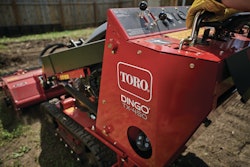FOLLOW OUR LEAD
Hey, fellas! Where can I get the newest copy of ProPickup? My business has picked up greatly and I have started working with vendors to create Project “Ultimate Responded.” This is an F-150 with accessories such as Warn semi-hidden winch, Whelen light bar, Air-Lift helpers in the rear, and things to help with fire/rescue and tow company recovery. Your project “Big Boss” convinced me to build a truck with the rescue theme. Keep up the great work. – Todd Gardner, Owner Equip-It-Outfitters, Latham, NY
Todd, You should have the latest copy now – and you’re on our mailing list to get the latest issues.
 FORD PTO ISSUE
FORD PTO ISSUE
We just purchased two 2011 F-550s and encountered clearance issue when trying to install a direct-drive PTO on the new transmission. The problem is there’s not enough clearance to install a PTO with direct-drive (drive shaft) because the driveshaft runs into the fuel filter. At this time, our only option is a hydraulic drive. Suggestions? – Bill Snow, General Manager Waste Processing LLC, Acworth, GA
Bill, unfortunately the answer isn’t one you’ll like. Our Ford insiders say that if your truck is a 4×4 you can’t fit a direct-drive PTO with a remote pump. If your F-550 (this applies to the F-250/F-550 models) is a 2WD, the PTO will have to be mounted forward or aft of the Fuel Conditioning Module (FCM) that is creating the space issue and the driveshafts made accordingly. The FCM controls fuel heating, conditioning and serves as a secondary fuel pump – all computer-controlled. It can’t be moved or else it voids the engine warranty because any changes in current flow (lengthening wires, etc.) to the FCM components changes how the computer sees its operation and function.
LIGHT QUESTION
Bruce W. Smith wrote an article (propickupmag.com/how-to-installs) that included installing a set of Warn W350F lights. In the article, he stated, “The only deviation from the instructions we took in our installation was simplifying the wiring by connecting the W350Fs directly to the factory Ram fog light plug and using the Warn wireless-remote system to power the PIAAs.” Does this allow the factory fog light switch to operate the Warn lights? If so, how did he splice into them? I’m installing them on a Jeep and would like to operate them using the factory fog-light switch instead of the Warn remote. Any help would be appreciated. – Erik Backe, San Diego, CA
Truck Supply & Outfitters removed the OEM fog lights, snipped off the wiring plugs, and used those plugs to replace the ones on the Warn lights so they could plug directly into the stock Ram wiring harness. It really simplifies the “upgrade” process using the factory wiring as long as the amp-draw of the “new” lights doesn’t overload the factory circuit. If in doubt, wire in a relay to take the extra load.
 LOUD TIRES
LOUD TIRES
Why do some mud tires make a lot of road noise and others not so much? – Willard Sanders, Coleharbor, ND
The tire’s tread pattern controls road noise. Mud tires with different shapes/sizes (asymmetrical) tread blocks are usually quieter than those that have very symmetrical lug patterns. Tire manufacturers spend considerable computer time studying adjacent lug shapes and placement. Spacing between the lugs and the size of the lugs also has a great influence on road noise.
DEF WARNING
How do these new diesels let you know the exhaust fluid is getting low? Is there a second gauge somewhere? And what happens if it runs out? – Stan Christensen, Portland, OR
There’s no gauge on the present heavy-duty diesel models, although that’d be a nice feature to have next to the fuel gauge. However, pickups using Diesel Exhaust Fluid give you plenty of warning. For example, Ford Super Duties flash a warning on the dash instrument cluster when the DEF tank has 800 miles worth of fluid remaining. Those alerts increase in urgency as the fluid level decreases. When the fluid runs out, the engine goes into a “limp-home” mode (idle). The tanks are designed to hold enough fluid, 5 gallons or so, to coincide with 3,000-mile engine-oil service intervals.
 FORD “JAKE” OPERATION
FORD “JAKE” OPERATION
I have a question about Ford’s new Jake Brake. In your February Tech Q&A the explanation that “Diesel pickup exhaust brakes clamp the turbocharger vanes which build exhaust backpressure against the piston on the exhaust stroke” is a new method I’ve never heard of. I have been shopping for an exhaust brake for my heavy-duty pickup for a while now and every single exhaust brake manufacturer I’ve checked out, without exception, is based around some version of a butterfly style valve downstream from the turbo. Until your mention in the magazine, I had not known that any of the manufacturers offer a model that acts directly on the turbocharger itself. Can you give us a little more information how this is done? – Bryan Banks, Land Improvements Inc., Florence, WI
We tried to get Ford engineers to give us more details. But they want to keep that new technology under wraps. So you’ll just have to use your imagination on how it works. Sorry.
RAISING TIRE PRESSURES
If low tire pressures hurt your mileage, will keeping the tire pressures above those indicated on the door tag give better fuel economy? – Scott Levins, Biloxi, MS
Nope. Running higher tire pressures than what the factory recommends only makes your pickup ride worse and accelerates tire wear. Higher tire pressures will also hurt handling, traction and braking because the tire’s “footprint” is made smaller. Stick to the tire pressures indicated on the driver’s door tag or in the owner’s manual.
GOT QUESTIONS?
Send them to Bruce Smith at [email protected]










